This was published 4 years ago
Australia: Best places to see and experience Indigenous culture
By Katrina Lobley
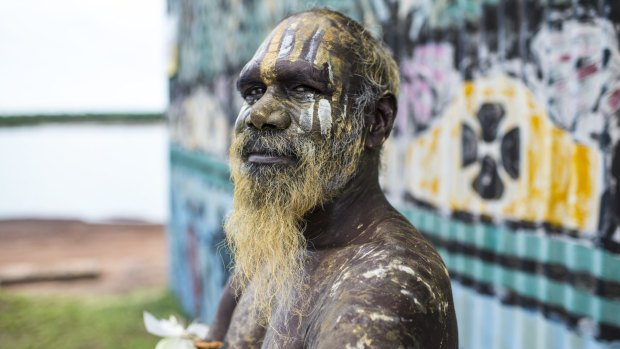
Indigenous culture on Tiwi Islands.
When the acclaimed artist Ben Quilty was in his youth, he took a formative Australian road trip during which he hoped to "learn Aboriginal" along the way, picking up a book on the Pitjantjatjara language. It wasn't until he met a young Indigenous man that he learned a single tome could never be enough.
"We showed him the book and he said, 'Why you learning that mob's language?' We said, 'What – where are you from?'", Quilty told an audience at the Sydney Writers' Festival.
"And that's the first time I realised we'd travelled through 62 language groups on that drive. I was 19 years old and I was ashamed. I was also furious that my whole education had missed the entire existence of Indigenous Australia."
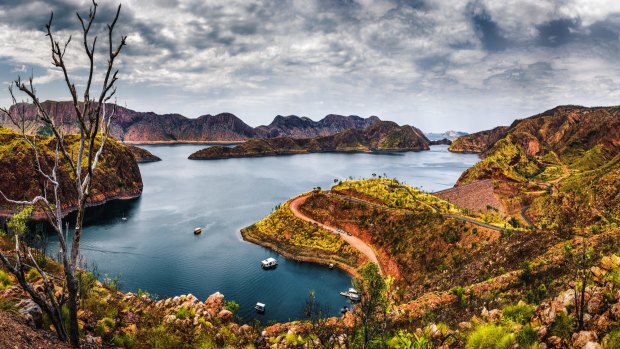
Lake Argyle, Kimberley, Western Australia.Credit: Alamy
Quilty promptly re-educated himself and today enthuses that the world's best painters live in central Australia. These days, there are more opportunities than ever to connect with the oldest living culture on Earth, with ventures ranging from bush-tucker tours to visiting traditional owners on their homelands.
On the eve of National Reconciliation Week (May 27 to June 3), Traveller asked five Indigenous Australians to name the places they'd recommend to those travellers seeking insights into Indigenous culture – for there's still much to learn.
As Belinda Duarte, Culture is Life chief executive and one of our panelists, says, "I look forward to the day in which we, as a broad community, connect and integrate and amplify that history of this country and be proud of the oldest living culture in the world as our own."
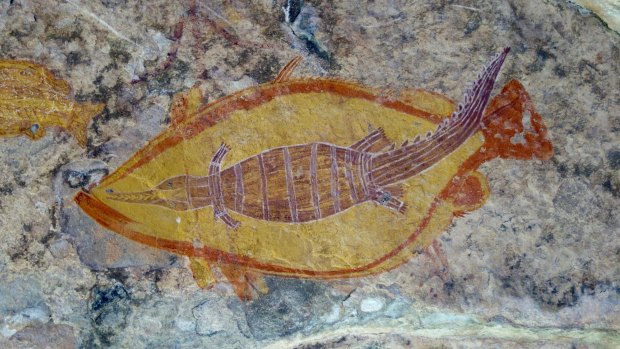
Cave painting of a crocodile inside a fish at the 'Mountford Site' near East Alligator River, West Arnhem Land.Credit: Alamy
EAST ARNHEM LAND, NORTHERN TERRITORY
THE EXPERIENCE
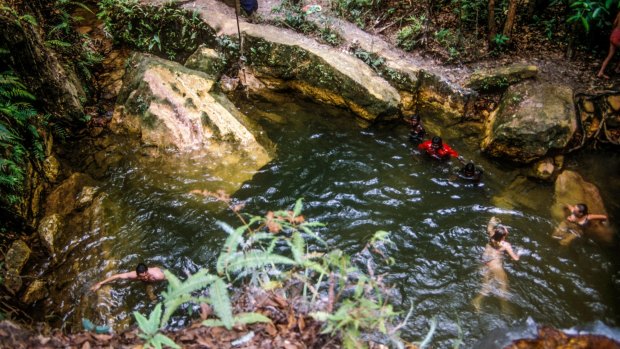
Rock pool at Taracumbie Falls, Bathurst Island, Tiwi Islands, Northern Territory.Credit: Alamy
Nhulunbuy (Gove), established in 1971 as a mining town, is the main hub of East Arnhem Land, home to the Yolngu clans. In the 1970s, Yolngu leaders began moving away from town and mission communities to return to their traditional clan lands. Visit the homelands to try weaving, spear-fishing, dancing and food-gathering. The annual Garma Festival takes place at Gulkula, a ceremonial meeting ground 40 kilometres from Nhulunbuy. About 2500 visitors converge on Gulkula for an Indigenous-programmed cultural exchange that includes dance, song, art, craft and knowledge.
WHY YOU'LL LOVE IT
"The town has nice accommodation where you can sit by the pool. It's called the Walkabout and it's a good place to pivot off going to the homelands and going out fishing," says Daniel Motlop. "People are beautiful out there and so welcoming. You can camp in the homelands with traditional owners and discover their sense of kinship and spirituality. Garma is one of the best culture experiences you'll ever have – if you're after a sense of culture and want to pinpoint one thing, go there. One of the best art centres is at Yirrkala. It's a 15-minute drive from Nhulunbuy to what's probably the best Aboriginal art centre in Australia."
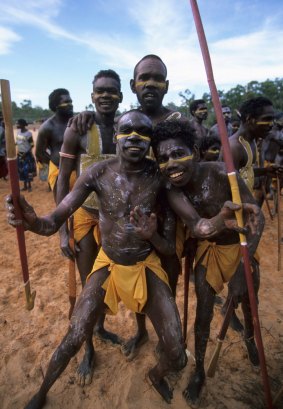
Aboriginal dancers at the Garma Festival.Credit: Alamy
MAKE IT HAPPEN
Intrepid (intrepidtravel.com) will run a seven-day trip into East Arnhem Land in September that includes two days of cultural activities in the Nyinyikay homelands and two nights on Bremer Island. This year's Garma Festival runs from August 2 to 5. Register by May 31 (yyf.com.au). In Nhulunbuy, stay at Walkabout Lodge (walkaboutlodge.com.au). The renowned Yirrkala Art Centre is part of the Buku-Larrnggay Mulka Centre, see yirrkala.com.
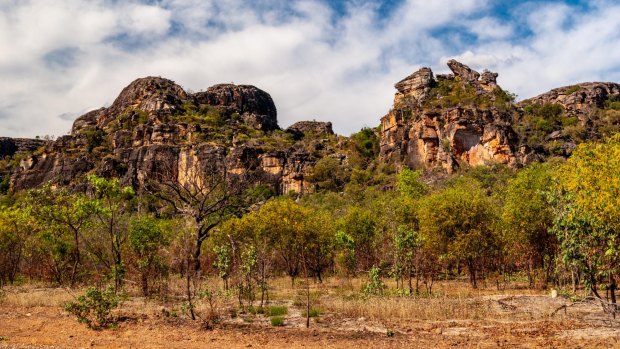
Arnhem Land Escarpment at East of Kakadu National Park.Credit: Alamy
TIWI ISLANDS, NORTHERN TERRITORY
THE EXPERIENCE
The Tiwi Islands, 80 kilometres north of Darwin, include Bathurst and Melville islands, and nine smaller uninhabited islands. Go to meet the famously friendly AFL-obsessed locals, fish the pristine waters and delve into the arts and crafts scene.
WHY YOU'LL LOVE IT
Brooke Boney says: "Without a doubt, the Tiwi Islands are my favourite place in the country to have an incredible experience with Indigenous culture. The Tiwis have slowly opened up to the rest of the country for tourism. Head to the town of Milikapiti – it sounds like you're saying 'milk and cup of tea' very quickly – on Melville Island. It's an incredible place rich in cultural tradition and they're obsessed with their AFL."
MAKE IT HAPPEN
AAT Kings (aatkings.com) offers day tours to Wurrumiyanga, home to art centres, a museum, a mission precinct and a cemetery skewered with Pukumani burial poles. Tiwi Islands Adventures (tiwiadventures.com.au) offers multi-day fishing trips with accommodation at Melville Island Lodge. On Bathurst Island visit the Tiwi Design Art Centre (tiwidesigns.com); at Milikapiti head to Jilamara Arts and Crafts Association (jilamara.com).
NORTH STRADBROKE ISLAND, QUEENSLAND
THE EXPERIENCE
North Stradbroke – or Straddie – is the world's second largest sand island. It's home to two large freshwater lakes: Blue Lake (Karboora) and Brown Lake (Bummiera). Traditionally, they were approached with caution because it was said a snake spirit lived in both lakes. Chilled-out Straddie is home to an unusual north-facing beach – Cylinder Beach – and relaxed roos that nibble the lawns.
WHY YOU'LL LOVE IT
Johnathan Thurston says: "There's great work being done by Quandamooka Yoolooburrabee Aboriginal Corporation on Minjerribah (North Stradbroke Island) to develop Indigenous experiences and teach about the Aboriginal history, which is celebrated every year through the Quandamooka Festival."
MAKE IT HAPPEN
Take a water taxi or car ferry from Cleveland, 40 minutes from Brisbane's CBD. There's an island bus service but a car is best for traipsing around. This year's Quandamooka Festival (June 1-August 31) includes corroborees, whale watching, weaving workshops and more. See quandamookafestival.com.au, stradbrokeisland.com
MOSSMAN GORGE, QUEENSLAND
THE EXPERIENCE
Delve into Mossman Gorge, part of the world's oldest surviving rainforest, to swim in the pristine Mossman River that cuts through the complex eco-system and to bask like a lizard on the boulders. You can also venture into a myth-laden parallel world – that of the Kuku Yalanji people – with a 1½-hour Dreamtime Gorge Walk.
WHY YOU'LL LOVE IT
"It's so much more than just a great tour of a beautiful area," says Thurston. "There's a training centre, an art gallery and a cafe all run by the Indigenous people of the area. It's a great example of taking ownership of a region's story."
MAKE IT HAPPEN
Mossman Gorge is two kilometres from Mossman, 20 kilometres from Port Douglas and 80 kilometres from Cairns. Self-drive, take a transfer from Port Douglas or a tour from Port Douglas or Cairns. To protect the World Heritage-listed Daintree Rainforest, visitors must ride a shuttle bus into the gorge from the Mossman Gorge Centre. See mossmangorge.com.au
RAINFORESTATION NATURE PARK, QUEENSLAND
THE EXPERIENCE
Catch an Indigenous dance performance and follow a Pamagirri guide along a walkway modelled on the Rainbow Serpent for revelations that include just how far a spear can be thrown using a woomera (one guide has famously clocked a distance of 147.75 metres) and how to imitate kangaroos and kookaburras on the didgeridoo.
WHY YOU'LL LOVE IT
Rainforestation is a pioneer of Indigenous tourism in Tropical North Queensland, developing their product in partnership with the traditional owners, Thurston says.
MAKE IT HAPPEN
Rainforestation Nature Park is near Kuranda, 27 kilometres north-west of Cairns. Drive from Cairns or reach Kuranda via the Kuranda Scenic Railway, the Skyrail Rainforest Cableway or a combination of both. See rainforest.com.au, ksr.com.au, skyrail.com.au
MELBOURNE, VICTORIA
THE EXPERIENCE
Melbourne's evocative laneways are home to cosy cafes, lively nightspots and brilliant street art. Step into Hosier Lane to admire Adnate's portrait of an Indigenous boy overlooking Birrarung Marr, a park next to Federation Square that's one of the city's most prominent Indigenous sites. Melbourne's traditional owners are five Aboriginal language groups that comprise the Kulin Nation.
WHY YOU'LL LOVE IT
"Often people think, living in the city, there's not anything that's Aboriginal as such but there are many sites throughout Melbourne that are significant," says Belinda Duarte. "The MCG is a significant gathering ground with multiple scar trees (where bark was removed to make canoes, shelters, shields and vessels). For me the MCG is a really special place because my great-great-great-grandfather was part of the first international sporting tour of the Australian cricket team. He and the uncles played in that area before departing for Lord's in England."
MAKE IT HAPPEN
Delve into Melbourne's Indigenous history through the Koorie Heritage Trust's Birrarung Wilam (River Camp) Walk (departs 1pm Wednesday to Saturday). Groups can book the Trust's Scar Tree Walk that incorporates the MCG. See koorieheritagetrust.com.au
THE BEST OF THE REST: OUR PANEL'S PICKS
BUDJ BIM NATIONAL PARK, VICTORIA
Thousands of years ago, Gunditjmara people engineered wetlands on the remains of a lava flow using an ingenious series of channels and weirs to trap short-finned eels, thus creating one of Australia's earliest and largest aquaculture systems. Farming and smoking these eels sustained large groups living near Lake Condah in south-west Victoria. Learn about this astonishing cultural landscape, nominated for World Heritage status, and see remnants of circular stone huts, on an Indigenous-guided tour. See budjbimtours.net
OUTBACK NSW
Take a road trip around outback NSW. Brooke Boney says: "I love Bourke for the journey out there as much as the destination. I know it sounds cliched but driving along the highway straight alongside an emu or trying to dodge kangaroos on the way through Wilcannia is so uniquely Australian, it hurts." See rock art depicting animals, dancing, hunting tools and hand stencils at Gundabooka National Park 50 kilometres south-west of Bourke. See nationalparks.nsw.gov.au.
GOLD COAST, QUEENSLAND
Join one of Jellurgal Aboriginal Cultural Centre's guided walks around Burleigh Head to find there's more to the glitzy Gold Coast than meets the eye. As joggers bob past on the trail, stop to discover features such as shell middens and an ochre pit. "It's an easy-to-understand history of the land," says Thurston. See jellurgal.com.au
MURRAY ISLAND, QUEENSLAND
"This is the home of [the late land rights campaigner] Eddie Mabo and, while it's difficult to get to, it's worth every minute of the small plane ride over the Strait to get there," says Brooke Boney of the Torres Strait archipelago's most easterly inhabited island (also known as Mer). Those who make the journey will find "the most crystal-clear water you'll never swim in – because it's shark- and croc-infested – but a culture so rich and beautiful you'll never want to leave", she says. "It's remarkably different from the Indigenous cultures on the mainland." See skytrans.com.au
THE COORONG, SOUTH AUSTRALIA
"Head down to the Coorong where the lake meets the ocean – it's another culture altogether in terms of how people live and how they hunt," says Daniel Motlop of the protected lagoon eco-system 160 kilometres south-east of Adelaide. "You can fish for Coorong mullet or go fly fishing." The otherworldly dune-scape includes age-old middens. See parks.sa.gov.au
WUKALINA WALK, TASMANIA
Walk with palawa (Tasmanian Aboriginal) guides and hear the creation stories that run through the Bay of Fires landscape on the state's stunning east coast. The three-night walk, which runs October to April, includes staying in palawa-inspired domed huts and a renovated lighthouse keeper's cottage. See wukalina.com.au
WILPENA POUND, SOUTH AUSTRALIA
Wilpena Pound, an extraordinary natural amphitheatre within the Flinders Ranges 430 kilometres north of Adelaide, is Adnyamathanha country. Hear a welcome to country in language each night at Wilpena Pound Resort. The property within Ikara-Flinders Ranges National Park also offers Aboriginal-guided walks along Wilpena Creek, framed by river red gums, to Old Wilpena Station and the contemporary artwork, Ikara – the Meeting Place. See wilpenapound.com.au
ULURU, NT
Uluru is Australia's spiritual heart and on October 26 its traditional owners' wishes will be honoured when climbing the monolith is banned. Enjoy the landmark in other ways: circumnavigate its base on foot or by bicycle or Segway, admire the blush of colour at sunrise and sunset, eye it from a distant dune while riding a camel or soar overhead in a helicopter. Take in "the biggest skies with the best sunsets you'll ever see in your life", says Boney, and don't forget to admire the star-spangled night sky. See ayersrockresort.com
CANBERRA, ACT
The nation's capital appeals to Boney because "the incredible galleries let the art and portraits tell the stories of our peoples". The National Gallery of Australia is home to the world's largest collection of Aboriginal and Torres Strait Islander art, which includes desert art, textiles, sculpture and bark paintings. "Then head to the lawns of Old Parliament House to see protest first-hand at the Tent Embassy," she says. See nga.gov.au
MEET THE PANEL
BROOKE BONEY, JOURNALIST
Nine Today Show entertainment reporter Brooke Boney is a Gamilaroi Gomeroi woman who grew up in the NSW Hunter region. While studying journalism at UTS, she produced the Blackchat program for Sydney's Koori Radio and interned at the ABC. She was a political correspondent for NITV but came to wider attention when, as triple J's breakfast newsreader, she opened her bulletins with "Yaama", the Gamilaroi word for hello. See 9now.com.au
DANIEL MOTLOP, AFL STAR TURNED FOODIE
Former AFL player Daniel Motlop is general manager of Adelaide-based Something Wild, Australia's first Indigenous-owned supplier of game meats such as magpie geese and native foods including green ants. Motlop is Larrakia (traditional owners of the Darwin area) and also has Torres Strait Island heritage. His father taught him how to hunt turtles and spear barramundi when he was a child. See somethingwild.com.au
BELINDA DUARTE, CULTURE IS LIFE, CHIEF EXECUTIVE
Change-maker Belinda Duarte, a descendant of the Wotjobaluk people, was born and raised in Ballarat. In 2012 she was acknowledged for her work in the AFL and was awarded Football Woman of the Year. At Culture Is Life, she works to prevent youth suicide and to support young Aboriginal and Torres Strait Islander people to thrive. See cultureislife.org
JOHNATHAN THURSTON, RUGBY LEAGUE LEGEND
Johnathan Thurston captained the North Queensland Cowboys NRL team from 2007 until 2018. In 2017 Thurston, who has Gunggari heritage, was awarded the Australian Human Rights Commission Medal for his work with Aboriginal and Torres Strait Islander communities. He is a co-owner of Skytrans, a regional airline servicing Cape York and Torres Strait Island communities. Last year, he joined Tourism and Events Queensland's board of directors. See jtacademy.com.au
MARK OLIVE, CHEF AND TV PERSONALITY
Bundjalung man Mark Olive is a chef and native ingredient expert who is also known as the Black Olive. He became interested in cooking after watching the women in his family prepare meals. He trained under a European chef and his wide-ranging television career includes being a member of the judging panel on the SBS series, The Chefs' Line. See blackolive.net.au
TRADITIONS, PROTOCOLS AND ISSUES: A BEGINNER'S COURSE
WELCOME TO COUNTRY
Australian events often start with a Welcome to Country, a ritual highlighting the cultural significance of the area to an Aboriginal clan or language group. The welcome is performed by a group elder.
SMOKING CEREMONY
Aboriginal people with specialised cultural knowledge can conduct smoking ceremonies, cleansing the space in which an event is to take place. Burning native plants creates the smoke.
STORYTELLING
Indigenous Australians are among the world's most vivid storytellers, passing down stories through generations for tens of thousands of years. Listen closely, the tales often provide moral guidance.
PHOTOGRAPHY PROTOCOLS
Photography is banned at some culturally sensitive sites. Uluru and Kata Tjuta, for instance, have rock details and features that are the equivalent of sacred scripture for the Anangu traditional owners. Because it's inappropriate to view images of these sites elsewhere, photography is banned.
ALCOHOL
Some Indigenous communities are designated "dry areas" or have alcohol limitations. Respect these restrictions when travelling to or through these communities.
MARK OLIVE'S FIVE FAVOURITE INDIGENOUS FOODIE TOURS
THE KIMBERLEY, WA
Kimberley tour operator and Nyikina man Neville Poelina is "renowned for his exceptional storytelling and vast knowledge of the area", says Olive. As the name of Poelina's company, Uptuyu Aboriginal Adventures, suggests, you can tailor an itinerary. Stay at a riverfront base camp between Broome and Derby and head out for adventures such as fishing for elusive barramundi or learning how to live off the desert. See uptuyu.com.au
SOUTH COAST, NSW
Join Noel Butler, a Budawang elder from the Yuin Nation and a horticulturist, chef and "master of bush foods", for a walk on country (the next one is July 13) that includes sharing knowledge about local native plants and a bush morning tea. See nuragunyu.com.au
CAIRNS, QLD
Tjapukai Cultural Park makes Indigenous culture fun and accessible with dance performances, hunting and weapons demonstrations, a didgeridoo show and a fiery night-time spectacular. Try boomerang and spear throwing, and tour the lush grounds with an Indigenous guide to learn about bush foods and medicinal plant usage. If you spy a green ant, pop it in your mouth – after the citrusy burst, you'll realise why chefs are clamouring for this "new" taste sensation. See tjapukai.com.au
MARGARET RIVER, WA
Wadandi man Josh Whiteland combines foraging for bush foods with playing a didgeridoo within a cave near Yallingup. During the three-hour Aboriginal Food, Cave and Didg tour, learn about the six Noongar seasons and how to make fire with two sticks. A seasonal barbecue lunch around the campfire could include roo, emu, quandong, emu plum and saltbush. See koomaldreaming.com.au
ALICE SPRINGS, NT
Arrernte guide and chef Bob Taylor promises "good food, ancient culture and beautiful country" on his lunch and dinner tours that highlight the majestic West MacDonnell Ranges near Alice Springs. Dinner is cooked in a bush oven or barbecue over a mulga-wood fire, with wildlife spotlighting to round off the evening. See rttoursaustralia.com.au
Sign up for the Traveller Deals newsletter
Get exclusive travel deals delivered straight to your inbox. Sign up now.